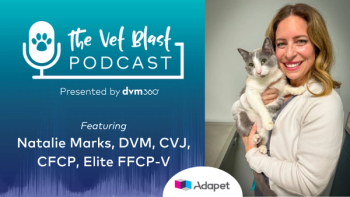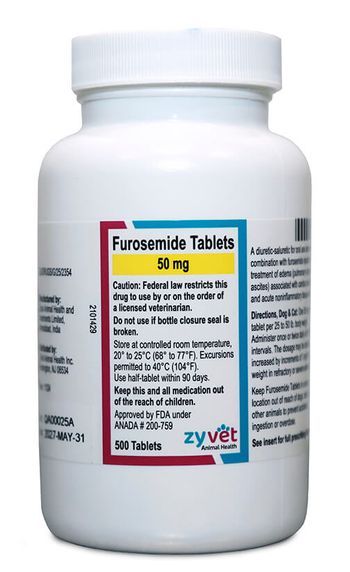
CVC Highlight: What influences diabetic remission in cats
A look at which factors might make spontaneous normalization of glycemic control more likely in one of your feline patients.
A unique feature of diabetes mellitus in cats is that some cats become non-insulin-dependent after treatment has been initiated. From 17% to 67% of cats with diabetes mellitus have been reported to go into spontaneous clinical remission after insulin treatment is initiated.1-4
Diabetic remission is usually defined as normoglycemia that persists for more than four weeks without the use of exogenous insulin,2 although some studies have defined it as euglycemia for only two weeks.5,6 The duration of remission varies, with some cats requiring insulin treatment again within a few weeks to months and other cats remaining in remission for months to years.
Factors that have been hypothesized to influence the likelihood of diabetic remission include the duration of diabetes mellitus, whether the cat initially presented in a ketoacidotic crisis, the carbohydrate content of the diet, the type of insulin used for treatment, the cat's breed, the presence of underlying disease, and how closely the blood glucose concentration is maintained within the normal range with insulin treatment. Stimulation tests with secretagogues such as glucagon and arginine have also been investigated to identify cats that have residual insulin secretion from the pancreas, but the presence of glucose toxicosis in cats complicates the interpretation of these tests, and they have not proved useful in predicting the likelihood of remission.7,8
In a study of factors influencing diabetic remission in cats, remission was found to be more likely with increasing age and increasing cholesterol concentration.2 Overall, 21 cats treated with insulin glargine and 23 cats treated with Lente insulin went into remission. A slightly higher percentage of cats (53%) treated with insulin glargine went into remission than cats treated with Lente insulin (47%).
Influence of diet
It has been proposed that low-carbohydrate diets increase the chance of diabetic remission in newly diagnosed diabetic cats. A prospective study comparing a low-carbohydrate, low-fiber diet to a moderate-carbohydrate, high-fiber diet in 63 diabetic cats showed improvements in glycemic control in both groups, but there was a higher rate of remission of diabetes mellitus in the low-carbohydrate, low-fiber diet.6 These findings support the clinical opinion that low-carbohydrate diets in conjunction with good glycemic control increase the likelihood of diabetic remission. If diabetic remission occurs in cats, it is most commonly in the first few months of treatment.
Influence of insulin
It has been shown that strict glycemic control is important in achieving diabetic remission, and it is clear that diabetic cats can go into remission with any insulin (e.g. Lente, protamine zinc [Prozinc-Boehringer Ingelheim Vetmedica], insulin glargine) if good glycemic control is achieved. Many clinicians believe that cats have better glycemic control with long-acting insulins (protamine zinc or insulin glargine), so most clinicians recommend these insulins as the initial insulin choice for treatment in diabetic cats.
It is currently unclear whether some long-acting insulin formulations are more likely to result in remission than others, or whether the critical factor is the glycemic control itself. In a study of 24 newly diagnosed diabetic cats treated with either glargine, protamine zinc, or Lente insulin and fed a low-carbohydrate, high-protein diet, a higher rate of diabetic remission occurred in the cats treated with insulin glargine than in the cats treated with protamine zinc or Lente insulin. However, because of the limitations of this study, further studies in larger groups of diabetic cats are required to confirm this finding.5
Influence of clinical presentation
Although presentation in a diabetic ketoacidotic crisis was thought to occur predominantly in cats with type I diabetes mellitus, suggesting that cats with diabetic ketoacidosis should not go into remission, a recent study documented that some cats that initially presented with ketoacidosis can go into remission with adequate glycemic regulation and control of concurrent illness.9
Other factors
Other factors that have been documented to increase the likelihood of diabetic remission in cats include1,2
- A short duration of diabetes mellitus (< 180 days)
- Administration of glucocorticoids before diagnosis
- A low insulin dose required to achieve glycemic control
- A lack of polyneuropathy
- An older age
- A lower cholesterol concentration.
Sex, body weight, presence of renal failure, presence of hyperthyroidism, or presence of obesity at diagnosis have not been shown to influence the likelihood of remission.1
Diabetic remission tends to last longer in cats of higher body weight.2 Serum concentrations of glucose, fructosamine, insulin, glucagon, and insulin growth factor 1 are not different between cats that do and do not achieve remission, but cats achieving remission have a higher glucagon-to-insulin ratio.7,10
REFERENCES
1. Roomp K, Rand J. Intensive blood glucose control is safe and effective in diabetic cats using home monitoring and treatment with glargine. J Feline Med Surg 2009;11(8):668-682.
2. Zini E, Hafner M, Osto M, et al. Predictors of clinical remission in cats with diabetes mellitus. J Vet Intern Med 2010;24(6):1314-1321.
3. Michiels L, Reusch CE, Boari A, et al. Treatment of 46 cats with porcine lente insulin-a prospective, multicentere study. J Feline Med Surg 2008;10(5):439-451.
4. Roomp K, Rand J. Evaluation of detemir in diabetic cats managed with a protocol for intensive blood glucose control. J Feline Med Surg 2012;14(8):566-572.
5. Marshall RD, Rand JS, Morton JM. Treatment of newly diagnosed diabetic cats with glargine insulin improves glycaemic control and results in higher probability of remission than protamine zinc and lente insulins. J Feline Med Surg 2009;11(8):683-691.
6. Bennett N, Greco DS, Peterson ME, et al. Comparisons of a low carbohydrate-low fiber diet and a moderate carbohydrate-high fiber diet in the management of feline diabetes mellitus. J Feline Med Surg 2006;8(2):73-84.
7. Tschuor F, Zini E, Schellenberg S, et al. Remission of diabetes mellitus in cats cannot be predicted by the arginine stimulation test. J Vet Intern Med 2011;25(1):83-89.
8. Nelson RW, Griffey SM, Feldman EC, et al. Transient clinical diabetes in cats: 10 cases (1989-1991). J Vet Intern Med 1999;13(1):28-35.
9. Sieber-Ruckstuhl NS, Kley S, Tschuor F, et al. Remission of diabetes mellitus in cats with diabetic ketoacidosis. J Vet Intern Med 2008;22(6):1326-1332.
10. Alt N, Kley S, Tschuor F, et al. Evaluation of IGF-1 levels in cats with transient and permanent diabetes mellitus. Res Vet Sci 2007;83(3):331-335.
J. Catharine Scott-Moncrieff, MA, Vet MB, MS, DACVIM, DECVIM
Department of Veterinary Clinical Sciences
School of Veterinary Medicine
Purdue University
West Lafayette, IN 47907
Newsletter
From exam room tips to practice management insights, get trusted veterinary news delivered straight to your inbox—subscribe to dvm360.






